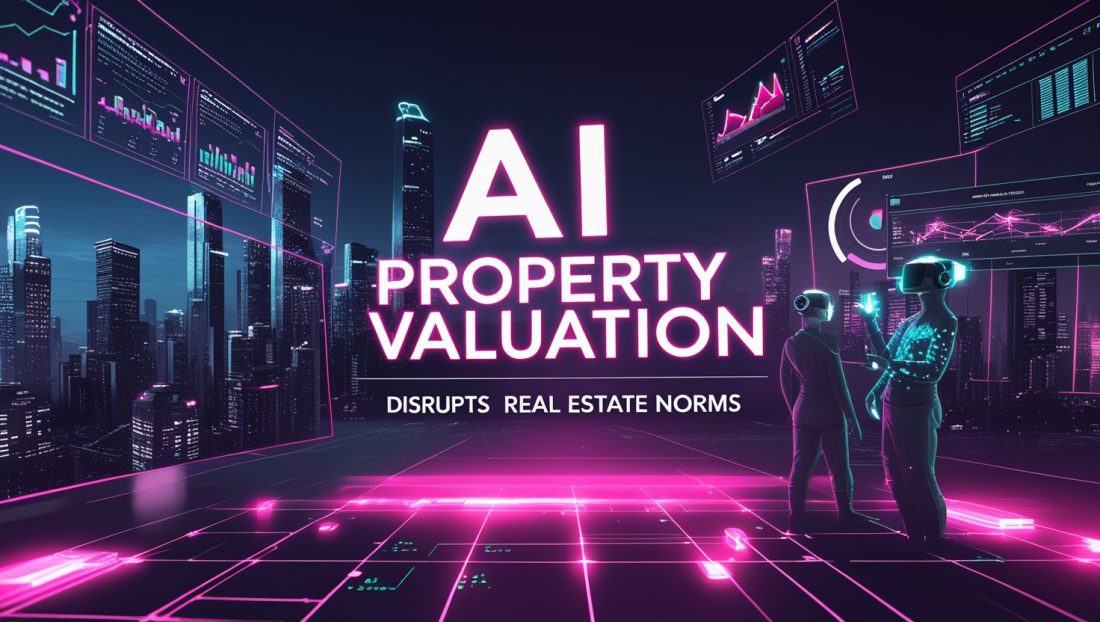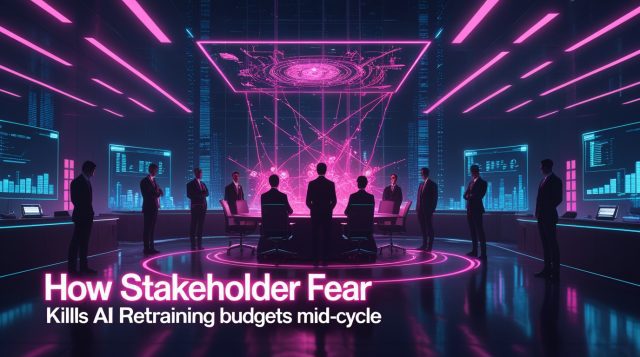The Tipping Point
Auckland investor Michael Chen faced an $800 invoice for a property appraisal in 2023—a two-week process that arrived outdated amid market volatility. Six months later, an AI property valuation platform delivered real-time assessments at 1/10th the cost. “The algorithm exposed development patterns humans missed,” Chen noted. “It wasn’t about speed—it was about strategic foresight.” This shift reflects broader trends in AI-driven decision-making, as seen in how AI-driven model optimization redefines business survival by leveraging predictive analytics to stay ahead of market dynamics.
This scenario mirrors a global shift: AI property valuation now drives 67% of regional bank mortgage underwriting and 89% of REIT portfolio rebalancing. The days of static appraisals are ending.
Decoding the Valuation Engine: Beyond Square Footage
The Data Universe
Modern AI property valuation systems ingest 57 data categories, organized in three layers:
- Structured Foundations: Tax histories, transaction records, geographic coordinates
- Unstructured Intelligence: Satellite imagery assessing roof conditions, sentiment analysis of neighborhood forums, school district meeting minutes
- Dynamic Feeds: Live Airbnb occupancy rates, transportation authority updates, construction permits
Zillow’s third-generation Zestimate algorithm exemplifies this, cross-referencing 150 million homes against 7.5 billion models—reducing off-market valuation errors to 1.9%. This data complexity parallels advancements in industrial AI analysis for manufacturing efficiency, where multi-layered data inputs drive operational precision.
Core Methodologies
Two algorithmic approaches dominate:
Hedonic Pricing
“We treat properties as attribute bundles—each bedroom, park proximity, or transit access carries an implicit price tag,” explains Dr. Lena Schmidt of ETH Zurich. “AI detects non-linear relationships, like how green space boosts values exponentially in low-income neighborhoods but marginally in affluent ones.”
Ensemble Machine Learning
Leading systems combine:
- Random Forests: Mapping thousands of decision paths for feature analysis
- Neural Networks: Processing street-view imagery for condition scoring
- Time-Series Forecasting: Projecting values under interest rate scenarios
Table: Accuracy Gains with AI Adoption
| Valuation Type | Traditional Error Rate | AI Error Rate |
|---|---|---|
| On-Market Homes | 5.8% | 1.7% |
| Off-Market Homes | 7.9% | 3.2% |
| 12-Month Forecasts | 12.3% | 6.1% |
| Source: Property Technology Journal 2024 |
Predicting the Unpredictable: How AI Anticipates Market Shifts

The Trendspotting Edge
When London’s Cedar Capital evaluated Manchester’s Ancoats district, their AI property valuation system flagged an anomaly: stagnant sales prices paired with surging rental demand. Cross-referencing university enrollment, transport upgrades, and co-working expansions, it projected a 17% value surge within 24 months—a prediction that materialized within 10% accuracy. For a deeper look at predictive AI’s transformative power, Forbes explores AI’s role in reshaping industries through advanced analytics.
Three Emerging Prediction Frameworks
I. Sentiment Arbitrage
Algorithms now track social media tone, news sentiment, and community forum discussions. In Melbourne’s Docklands, negative sentiment about public space maintenance predicted cap rate widening six months before traditional indicators.
II. Infrastructure Impact Modeling
Transport for London’s collaboration with Knight Frank revealed properties within 500m of eastbound Crossrail stations appreciated 23% faster than westbound counterparts due to school district overlaps—a nuance human appraisers overlooked.
III. Climate Vulnerability Pricing
California’s EQZero platform incorporates 30-year flood projections and wildfire simulations, reducing overvaluation in high-risk zones by 34% compared to human appraisals. This focus on environmental risk aligns with efforts to use technology for sustainability, as detailed in how robotics combats climate change, emphasizing AI’s role in addressing global challenges.
Why Transparency Matters in AI Valuation
The “Black Box” Dilemma
A 2024 New Zealand regulatory audit exposed a critical gap: 68% of AI property valuation systems couldn’t explain value adjustments exceeding 5%. “We found algorithms penalizing homes with ‘kauri’ in addresses—misinterpreting native wood references as construction risks,” acknowledged FinTech NZ’s audit director.
Bias Mitigation Breakthroughs
Leading platforms now deploy:
- Confidence Banding: Displaying value ranges (e.g., $575K–$610K) rather than single-point estimates
- Demographic Audits: Flagging correlations between ethnicity/disability data and valuation outputs
- Hybrid Workflows: Requiring human sign-off on outlier recommendations
“The future isn’t AI versus humans—it’s AI through humans,” asserts Tyrone Hodge, JLL’s Global Head of Risk Advisory. “Like radiologists paired with diagnostic algorithms, valuation peaks when computational power meets experiential wisdom.”
Industrial Impact: Where AI Valuation Delivers ROI
Portfolio Optimization
Blackstone’s 2024 AI integration achieved:
- 93% faster asset rebalancing decisions
- 12% higher portfolio yields through micro-location identification
- $3.8M annual savings in appraisal costs
Debt Underwriting Transformation
Singapore’s DBS Bank processes SME commercial loans 11 days faster using a three-tiered approach:
- Tier 1: Low-LTV standardized assets (full automation)
- Tier 2: Complex properties (AI analysis + valuer review)
- Tier 3: Unique assets (traditional appraisal)
This efficiency mirrors advancements in AI-powered regtech for compliance, where automation streamlines complex financial processes while maintaining accuracy.
Table: Sector Adoption Rates (2025)
| Sector | AI Adoption Rate | Primary Use Case |
|---|---|---|
| REITs | 89% | Portfolio rebalancing |
| Regional Banks | 67% | Mortgage underwriting |
| Private Equity | 78% | Acquisition targeting |
| Tax Authorities | 42% | Assessment uniformity |
| Source: Deloitte Proptech Survey 2025 |
The Next Frontier: Four Emerging Valuation Technologies
1. Quantum Forecasting
JLL Labs pilots quantum models simulating 50,000+ market variables simultaneously, slashing forecast errors below 4% in volatile markets.
2. Tokenized Asset Referencing
Propy’s blockchain integration enables instant value adjustments when tokenized comparables trade—cutting refresh cycles from weeks to seconds.
3. Generative Scenario Modeling
U.K. platform Valos runs “what-if” simulations for zoning changes or climate events, showing regeneration impacts before planning approval.
4. Explainability Engines
New compliance tools create audit trails for valuation decisions, addressing the EU AI Act’s “algorithmic explainability” mandates effective 2026. These regulatory shifts are critical, as outlined in TechCrunch’s analysis of AI compliance challenges, which highlights the global push for transparent AI systems.
Why This Transformation Extends Beyond Efficiency

We’re shifting from appraisal (retrospective assessment) to continuous valuation (living assessment), enabling:
- Democratized Intelligence: Small investors accessing institutional-grade analytics (e.g., HouseCanary’s neighborhood insights)
- Risk Distribution: Securitization markets pricing assets with granular accuracy
- Sustainable Development: Climate risks embedded in transaction values, steering capital flows
As RICS warns: “The cost of ignoring transparent AI property valuation isn’t inefficiency—it’s systemic inequity. Opaque algorithms could calcify historical biases into our urban futures.”
The Human Counterpoint: When Berlin’s Covivio deployed AI across its €28B portfolio, valuation director Anika Weber noticed consistent overvaluation of 1920s apartments with stucco details. “The algorithm couldn’t quantify ‘cultural nostalgia’—that’s where human experience remains irreplaceable.”
Frequently Asked Questions
Can AI explain why a property’s value increased by 15%?
Leading systems now provide “value attribution reports” (e.g., 8% from school district upgrades, 5% from transit links, 2% from zoning changes). New Zealand mandates such explainability by 2026.
Do lenders accept fully automated valuations?
For low-risk loans under 60% LTV, yes. JPMorgan processes 37% of suburban mortgages via AI. Unique or high-value assets still require hybrid approaches.
How does AI handle recession forecasting?
Platforms like Skyline AI backtest against 2008–2012 data, stress-testing valuations against unemployment spikes and rate surges. Accuracy currently reaches 79% for 18-month projections.
What’s the cost difference vs traditional appraisal?
Manual appraisals average $300–$800 per property. AI solutions range from $15 (automated reports) to $80 (hybrid evaluations).
The Path Forward
The AI property valuation revolution isn’t about replacing appraisers—it’s about liberating them. As Morgan Stanley projects $34B in industry efficiencies by 2030, the winners will be those leveraging algorithms for pattern detection while applying human judgment to contextual anomalies.
Your Next Step: Audit your portfolio’s valuation efficiency. For every $1 million in assets, AI adoption saves $12,500 annually in appraisal costs while reducing pricing errors by 47%. The question isn’t whether to adopt—it’s how fast to scale.


